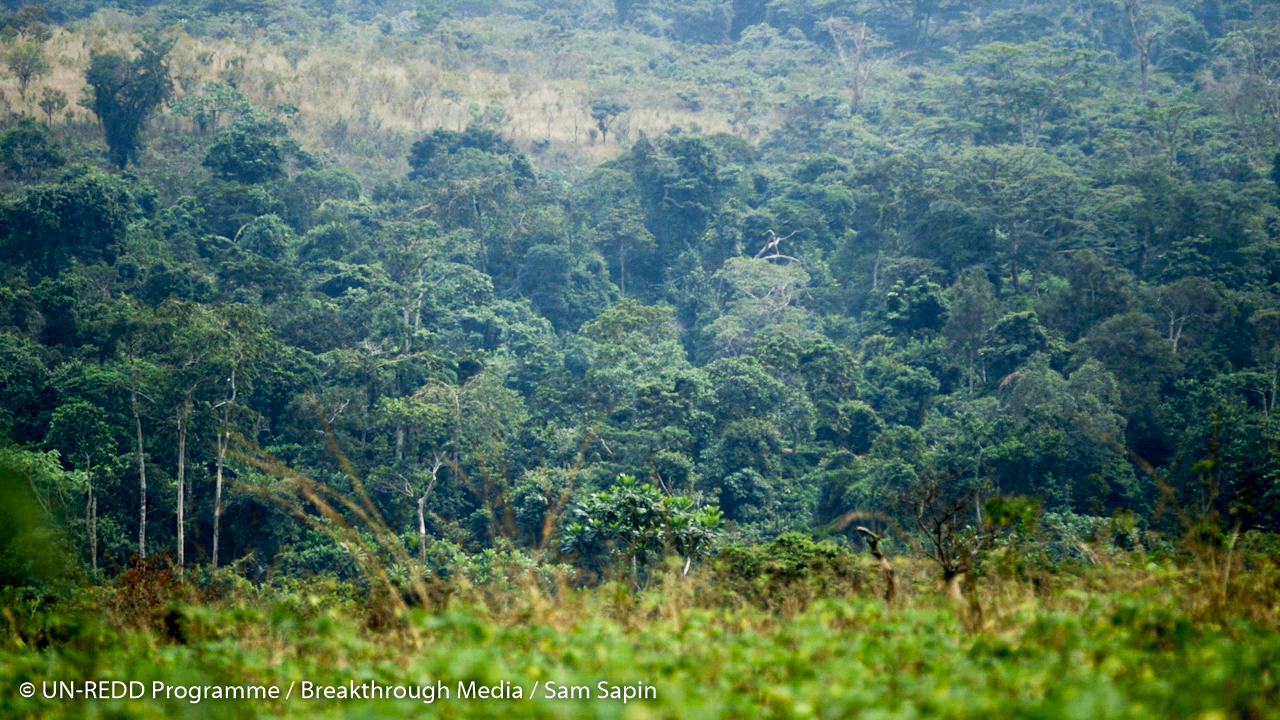The Republic of Congo recently completed an economic analysis of the costs and benefits of its strategic options for REDD+ and a review of the sources of financing for the implementation of its National REDD+ Strategy. This is the first part of a conversation between UN Environment’s Emelyne Cheney and Jonathan Gheyssens about their experience of supporting the country with this challenging but decisive piece of work.
What does a cost-benefit analysis consist of?
Emelyne: A cost-benefit analysis enables countries to assess the economic value of the policies and measures (PAMs) they have identified to implement REDD+. It uses quantitative data and projections to calculate the costs of implementing the PAMs and the financial benefits to be expected over a number of years. It not only provides a realistic estimation of the costs involved in implementing a PAM, or a group of PAMs, over time but it also makes it possible to compare these costs to the benefits that will be generated through REDD+ result-based payments and other forms of revenues. Of course, economic considerations are just one of the elements that countries will consider when selecting their PAMs – which should primarily be informed by the desired environmental and social outcomes – but a cost-benefit analysis can help ensure that a National REDD+ Strategy is viable financially.
Jonathan: I would like to emphasize the last point Emelyne made on the importance of the cost-benefit analysis as an instrument to assess the financial viability of the National REDD+ Strategy. As the country graduates from the readiness stage and starts to contemplate how best to approach the implementation of its various policies and measures, the cost-benefit analysis is a unique chance to undertake a final ‘sanity check’ on the Strategy. It helps identify funding requirements (and possible funding arrangements) and might expose important trade-offs between the intended environmental and social targets, and the likelihood of getting them financed. It also helps to differentiate between strategic options that are enabling expenditures that the country must incur to effectively implement the PAMs on one hand and profitable and sustainable land use change activities on the other. To give an example in the specific context of this project, improving government capacity to adequately manage the REDD+ Strategy was identify as a key enabling strategic option, but a rather costly one. On the other end of the spectrum, the analysis indicated that strategic options aiming to improve agricultural productivity may be profitable and financially attractive to private investors, warranting to explore the potential for blended finance schemes.
How did this work come about in the Republic of Congo?
Emelyne: The workplan of the UN-REDD National Programme of the Republic of Congo included the preparation of an Investment Plan for the National REDD+ Strategy. More than half way through the three-year Programme, however, the National Strategy was still very much a work in progress and did not provide a sufficient base for planning investments. It actually became apparent that the country would benefit from having economic considerations in order to finalize its choice of PAMs (known as “strategic options”) to implement REDD+. After discussing with the government, it was then decided that UN Environment would support a cost-benefit analysis of the preliminary strategic options identified by the Congolese government, as well as a review of the sources of financing most appropriate for their implementation.
Jonathan: The government was extremely receptive to the idea of using the cost-benefit analysis as a preliminary assessment of the National Strategy’s economic strengths, challenges and opportunities and to use it as an indication of the seriousness of their commitment to climate change and the REDD+ mechanism. In a funding environment that is both changing rapidly and still very much steered by the international donor community, there is a growing understanding that attracting public (and eventually private) funds to finance National REDD+ programs will be a competitive process requiring a high level of transparence and diligence on the part of the National REDD+ Coordination. In light of this, the cost-benefit analysis was meant to inform and guide the resource mobilization strategy.
What were the challenges of undertaking such an analysis in this particular national context?
Jonathan: By far the main challenge, which is certainly not unique to the context of the Republic of Congo, was the relative paucity of available data to undertake the cost-benefit analysis, which resulted at times in an overreliance on expert assumptions. It made it all the more important to collaborate closely with the government to jointly review each strategic option and agree on the different estimates to feed into the cost-benefit analysis. A connected challenge was to find the right balance of ambition and realism in building projections for the strategic options. Many of these options have never been implemented and tested in the country and this lack of a track record makes it difficult to appreciate the extent of the implementation challenges that will inevitably be encountered. It required engaging with a variety of stakeholders beyond the government circles and combine their different inputs to refine and substantiate the scenario projections.
Emelyne: Luckily the National REDD+ Coordination proved to be a committed government partner who was always willing to take on new and challenging tasks. Despite a steep learning curve for government experts to grasp economic and financial notions, every step of the analysis was completed in full consultation with the Coordination. But the challenges were still numerous! Finding reliable quantitative data on which to base the analysis has been difficult at times and obtaining documents (policies, reports, feasibility studies, etc), even when they belonged to the public domain, has required a great deal of effort and perseverance. The analysis also demanded clarity of what the policies and measures entailed specifically, leading to some difficult questions for the government to answer: On what part of the national territory do you intend to implement this measure? For how many years? With what methodology? We asked of our government partners to be as specific and open as possible about the content of their strategic options, to go beyond the statement of intent to provide us with realistic scenarios on which to make calculations.


